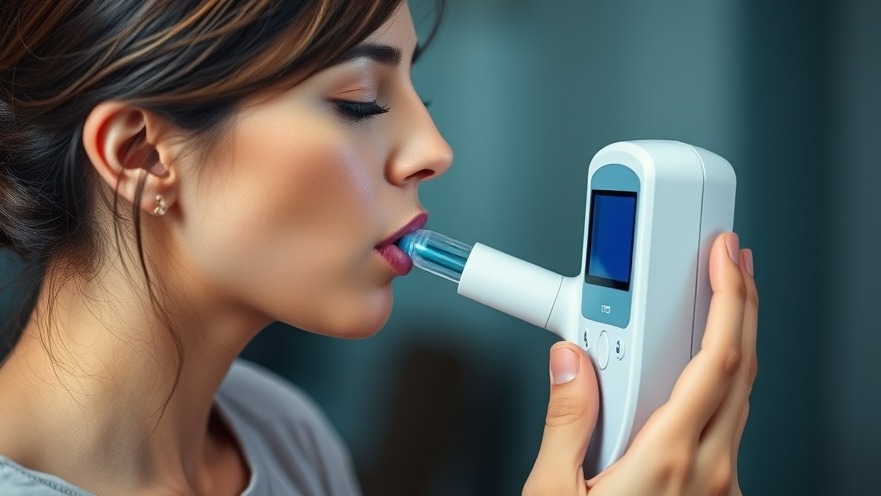
Revolutionizing Diabetes Testing: A Breath of Fresh Air
In an exciting leap forward for diabetes diagnostics, researchers are developing a method that could allow patients to diagnose diabetes simply by breathing into a bag. This transformative technology utilizes advanced analytical tools to detect biomarkers in exhaled breath, paving the way for a non-invasive and efficient diagnostic approach.
Understanding the Technology Behind Breath Analysis
The core of this innovation lies in the analysis of volatile organic compounds (VOCs) present in human breath. Each person's breath contains a unique signature of chemicals that can indicate various health conditions. By examining these VOCs, the newly developed device can identify patterns linked to diabetes, which traditionally requires more invasive blood sugar tests.
This breath analysis technique not only alleviates the need for needles or blood samples but also aims to enhance patient comfort and accessibility. As diabetes rates continue to rise globally, particularly in the wake of increased sedentary lifestyles and unhealthy eating habits, such advancements can significantly alter how diabetes is detected and managed.
The Impacts of Non-Invasive Testing on Patient Care
For healthcare practitioners, the implications of non-invasive testing methods extend beyond just patient comfort. This approach could lead to early diagnosis for individuals who may be reluctant to seek traditional testing due to fear of pain or discomfort. An early diagnosis through breath analysis could significantly alter disease management and prevention strategies, fostering a more proactive approach to diabetes care.
Additionally, by adopting technology that simplifies the diagnostic process, health practitioners could enhance patient engagement. The ease of administering a breath test may encourage more individuals to undergo regular screenings, leading to improved outcomes in diabetes prevention and management.
Future Trends in Diabetes Management: What Practitioners Should Know
As emphasis on preventative healthcare grows, technologies like breath analysis position themselves as game-changers in disease detection. Health practitioners should keep a close eye on this development as it signals a larger trend towards integrating technology with patient care. Sensors and wearables are gaining traction, and incorporating simple diagnostics into patient interactions strengthens the connection between technology and health.
In the coming years, as the effectiveness and accuracy of breath analysis improve, it may very well become a standard practice in assessing diabetes risk—enabling immediate feedback for patients and real-time data for practitioners.
Common Misconceptions About Breath Tests for Diabetes
While the prospect of diagnosing diabetes through breath analysis is thrilling, it also brings its share of skepticism. One common misconception is that such a method may not be as reliable as traditional blood tests. However, early studies suggest that breath analysis can yield comparable, if not superior, results when it comes to diagnosing diabetes, making it a viable alternative.
Practitioners must educate themselves and communicate effectively with patients, dispelling doubts regarding the reliability of new methods. By fostering an understanding of the breath analysis process, practitioners can help patients embrace innovation in diabetes care.
Closing Thoughts and Future Opportunities
The advancement of non-invasive diabetes testing represents a significant step forward in patient care. As concierge health practitioners, being early adopters of these technological shifts can enhance your practice’s service offerings and improve patient health outcomes. Engaging in continuous education on emerging technologies will not only place you ahead in patient care but also establish your practice as a leader in medical innovation.
Staying updated on such technological advancements is essential for delivering exemplary patient-centered care. Explore breath analysis technology today, as it may soon be a key tool in your practice's diagnostic toolkit.
 Add Row
Add Row  Add
Add 




Write A Comment